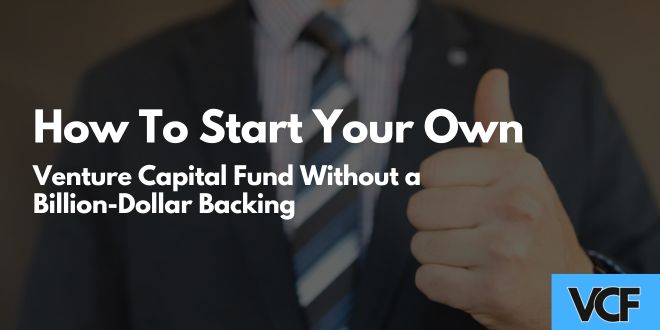Venture Capital Funding used to be the exclusive domain of deep-pocketed institutions and career investors who spent months, sometimes years, raising a traditional fund. Today, however, technology platforms and modern legal frameworks have shrunk the learning curve. At the center of this shift sits the Special Purpose Vehicle—better known simply as the SPV.
If you have a network of interested backers and a compelling deal in hand, an SPV can let you act like a fund manager in a fraction of the time and with a fraction of the overhead. Below is a practical, jargon-light guide to understanding, forming, and running an SPV without losing sleep or money.
A Quick Definition
An SPV is a single-purpose legal entity—most often an LLC or limited partnership—created to pool capital from multiple investors so that the entity, not the individual investors, appears on a target company’s cap table. Unlike a blind-pool fund that invests across many deals, an SPV is focused on one specific investment (or occasionally a small cluster of related investments).
How It Differs from a Traditional VC Fund
Traditional funds raise money first and decide what to buy later; LPs commit capital up front and trust the manager to deploy it over a 10-year lifecycle. An SPV, by contrast, is deal-specific and time-boxed. Investors review the single asset, sign their docs, wire their money, and gain exposure only to that asset. The structure provides transparency for LPs and lets emerging managers build a track record without the pressure of running a full-blown fund.
Why Founders and Emerging Managers Love SPVs
Speed and Simplicity
Once your legal docs and bank account are in place, it is realistic to open an SPV, circulate subscription agreements, and close the round in two to six weeks. Compare that with a first-time fund that can take 12–18 months to raise and you start to see why SPVs have become so popular with angels, scouts, and micro-fund managers trying to move quickly on a hot deal.
Friendly Check Sizes
Because the SPV appears as a single line on the cap table, founders can accommodate a larger number of smaller investors without administrative headaches. You might collect 30 checks of $25,000 each, yet the company only has to manage one shareholder: your SPV. For managers, that means you can say “yes” to supportive angels who might not get an allocation otherwise.
Modular Track Record
Every SPV is a discrete deal, which makes performance easy to measure. Close a few successful SPVs and you have verifiable proof of your investing chops—data you can later use to launch a bigger Seed or Series A fund. Think of each SPV as a résumé line item rather than a sprawling commitment.
Building Your Own SPV in Five Simple Steps
Step 1: Pick Your Platform or Legal Counsel
You can DIY with a lawyer and spreadsheet, but most people lean on turnkey platforms such as:
- AngelList
- Assure
- Sydecar
- Allocations
These services bundle entity formation, compliance checks, wiring instructions, and post-close administration for a flat fee or a small percentage of the raise. The trade-off is convenience versus cost—decide which side you value more.
Step 2: Form the Entity and Draft Docs
Whether you use an online platform or outside counsel, you will need:
- A formation certificate (usually in Delaware for U.S. investors)
- An operating agreement or limited partnership agreement defining roles and economics
- Subscription documents for investors that spell out risks, fees, and carried interest
- An investment management agreement if you intend to charge a management fee
Most platforms generate these documents automatically, but you should still read every clause. Details like voting rights, follow-on reserves, and indemnification can come back to bite you.
Step 3: Round Up Investors
Create a concise memo—no need for a glossy prospectus—that highlights:
- The target company’s traction and terms
- Your thesis: why this company and why now
- Capital required, minimum check size, closing date, and projected fees/carried interest
Send the memo to accredited investors and give them a clear deadline. Momentum matters; the first 30–40% of soft commits often unlocks the rest of the round.
Step 4: Close the Deal
Once commitments meet or exceed your target:
- Circulate subscription agreements and wiring instructions
- Monitor deadlines closely to ensure funds arrive on time
- Wire capital from the SPV’s bank account to the startup
- Sign the purchase agreement
Then celebrate—but quietly. The real work begins next.
Step 5: Post-Investment Administration
After closing, you must:
- Distribute K-1s or equivalent tax documents annually
- Track subsequent funding rounds and pro-rata rights
- Communicate material updates to investors
- Collect and distribute proceeds when an exit occurs
Platforms automate most of this, but ultimate responsibility sits with the SPV manager. Investors will remember who kept them informed and who left them guessing.
Costs to Expect (and How to Keep Them Under Control)
Budgeting surprises sink many first-time managers. Typical line items include:
- Formation and filing fees: $1,000–$3,000
- Platform or administrative fee: $8,000–$15,000 (often rolled into closing costs)
- Legal review (if hiring outside counsel): $2,500–$7,500
- Annual tax prep: $1,000–$2,000
To offset expenses, managers usually charge:
- A small management fee (1–2% of committed capital)
- Carry (10–20% of net profits)
Keep the fee schedule modest; the real upside comes from carry, and LPs respect frugality.
Common Pitfalls to Avoid
- Overpromising allocation: Founders shuffle cap tables late in the game; secure your slice before you market it.
- Sloppy compliance: Know your KYC/AML obligations and state Blue Sky filings. Ignorance is not a defense.
- Under-communicating with LPs: Silence breeds mistrust. Monthly or quarterly email updates are easy goodwill.
- Neglecting follow-on rights: If you can’t fund pro-rata, negotiate for the right to assign those rights to LPs or another friendly fund.
When an SPV Makes More Sense Than a Traditional Fund
SPVs shine when:
- You have sporadic deal flow—maybe two or three compelling opportunities a year
- You’re testing your investor-relations chops before committing to a decade-long fund
- The target company is oversubscribed, and the founder can’t accommodate each interested angel separately
- You’re carving out a sidecar for a larger fund to give strategic angels a seat at the table without diluting core LP economics
However, if you plan to invest continuously across a diverse portfolio and expect high follow-on demands, a traditional fund may still be the better route.
Final Thoughts
Launching a full-scale venture fund once required a Rolodex of institutions, a team of lawyers, and the patience of a saint. SPVs have lowered that bar, allowing almost anyone with deal access and hustle to participate meaningfully in venture capital funding.
They are not a silver bullet—administration is still real work, and you must earn the trust of every dollar you raise—but they are undeniably the fastest, simplest way to get capital from Point A (your LPs) to Point B (the startup of tomorrow). Master the mechanics, avoid the common traps, and you will find that the humble SPV can serve as both a proving ground and a launching pad for an enduring career in venture capital.








